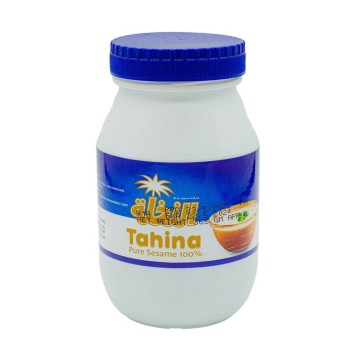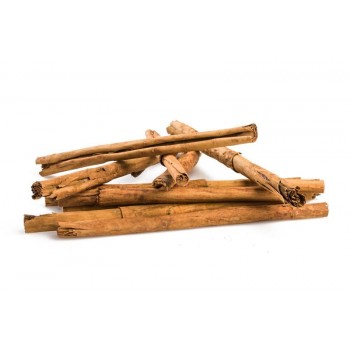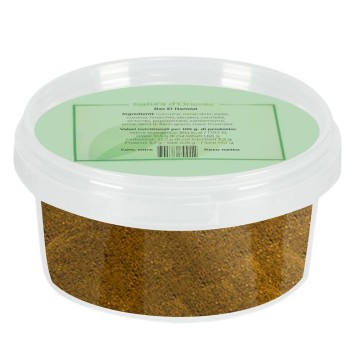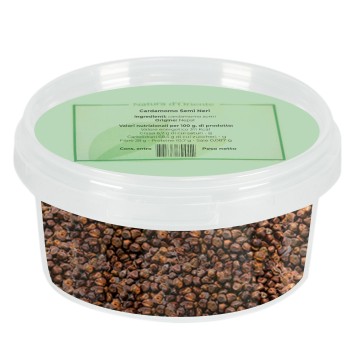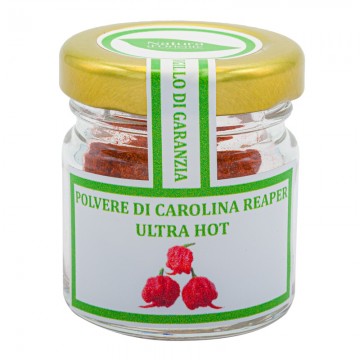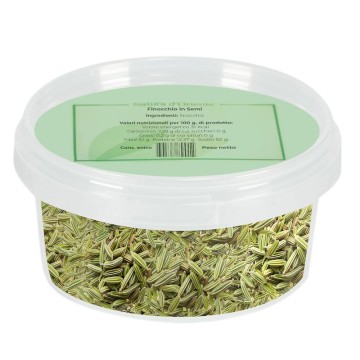For those who love pungent flavors and Mexican cuisine, this spicy blend is convenient for always having a practical and aromatic condiment on hand. Mexican chili shows a perfectly balanced taste between ground chili peppers and spices typical of Mexican dishes such as garlic and cumin. It gives recipes a spicy taste, with warm smoky notes thanks to paprika. It is versatile: you can add it to flavor casseroles, pan-cooked dishes, chili meat, enchiladas or any other dish to experiment with spiciness.
Mexican chili: properties and benefits
The combination of Mexican spices allows you to obtain several wellness as well as gastronomic benefits. First of all, adding spices saves time, and can replace the salt (contained inside), to avoid extra sodium in the diet. Chili pepper is a component widely used both in Mediterranean cuisine and in dishes of different exotic traditions, having understood some of its beneficial properties since ancient times. In modern times, nutritional research has clarified that chili pepper is an antioxidant spice useful for digestion, stimulating the production of gastric juices. It is beneficial for the regular motility of the gastrointestinal system and the elimination of gas. The beneficial effect on digestion is also shared by cumin, garlic and black pepper; as well as from paprika which always derives from some varieties of pepper.
Furthermore, capsaicin helps the regular functionality of the cardiovascular system and normal blood circulation with its vasodilatory effect. Chili pepper is also known for its stimulating effect on the metabolism, as it increases heat dispersion. An active ingredient in chili pepper, the main substance responsible for spiciness is the alkaloid capsaicin. It is a rubefacient or a substance which, in contact with the skin, dilates the capillaries, stimulates and increases blood flow - creating the well-known sensation of heat when tasting chilli pepper ("going on fire").
Pepper, on the other hand, contains piperine which always has beneficial qualities for digestion and for the regular functioning of the cardiovascular system. Garlic provides other antioxidants and compounds such as allicin, useful for the well-being of the cardiovascular system.
It is good to pay attention when consuming this mixture of spices, given that the spicy components are irritating to the mucous membranes. It is necessary to dose carefully, given that elements such as chilli and pepper could, through the hands, enter the eyes, nose or come into contact with other mucous membranes. Furthermore, an excessive amount of hot spices can become an irritant for the gastric and intestinal mucosa in case of ulcers, hemorrhoids, irritation of the urinary tract.
The spices of Mexican chili
It includes ingredients that may vary, but in general it is a combination of chili pepper, paprika, black pepper, cumin, garlic. The agent mainly appreciated in Mexican chili is chili powder, to which other spices and a pinch of salt are added. A practical condensate for seasoning.
The chili pepper creates the special spiciness of this spicy mix; it dominates the taste in a strong and decisive way, as per tradition, but does not dominate the other elements.
Garlic gives a strong, hot and pungent flavour, which envelops the palate in an intense way and combines with chilli pepper to enhance the spicy note.
Paprika is the element with a slightly smoky flavour, a bitter hint and a slightly fruity aroma; makes the perfect mix for flavoring meat, vegetable dishes and sauces.
Cumin is often used in Spanish Mexican cuisine. The pungent but not invasive taste barely evokes bitterness. It gives a warm and slightly toasted aroma that combines well with the paprika.
Black pepper is the spicy spice with a deep aroma, acrid and decisive notes. Like garlic, it gives the flavor that makes Mexican chili versatile on many different dishes.
Using Mexican Chili in cooking
Widely used as a condiment, it is a typical ingredient of Mexican cuisine and Tex-Mex (Texas) dishes.
You can use Mexican chili as a condiment for fajitas homemade, chili sauce, chili con carne (meat and chili stew), enchiladas and tacos - if you want to stick to local recipes. Otherwise, this Mexican spice blend is great on grilled meat: beef, pork or chicken, steaks. Sprinkle the meat with Mexican chili before grilling, roasting or baking it for a typical Mexican flavor. You can also createand marinades for meat. The spicy mix is also excellent in dishes such as scrambled eggs, sautéed or roasted vegetables, potatoes and casseroles.
It can be combined with rice or pasta, for pungent first courses, as a condiment for vegetarian dishes of tofu and legumes. A pinch can also be added to baked goods and in combination with dark chocolate, carefully evaluating its taste. It also works for intense flavor sprinkled on top of sliced avocado, in salads, for dips, and used with melted butter for a tantalizing drizzle.
Chili with meat and beans
Ingredients: 500 g of mixed minced meat of beef and pork - 200 g of already boiled red beans - 200 g of tomato - 1 large red pepper - half a white onion - 1 clove of garlic - 4 tablespoons of extra virgin olive oil - 80 g of cheddar - a few drops of Tabasco - parsley - salt - Chili Mexican - 25-30 nachos
< strong> Preparation Finely chop the onion and peeled garlic.
Brown in a large pan with oil. Wash the pepper, remove the stem, seeds and white filaments and cut it into cubes. When the onion is golden, add the pepper and sauté it for a few minutes, then add the minced meat and brown it for 5-10 minutes, stirring often.
Add the tomato pulp, a pinch of Chili Mexican (according to the spicy taste you want to achieve) and a few drops of Tabasco. Add half a glass of hot water and cook with the lid on over low heat for about 30 minutes. Once the time has elapsed, add the beans and add salt if needed.
Flavor for 5-10 minutes, finally add the cheddar cheese and mix well to melt it, then turn off the heat and leave to rest for a few minutes. Serve the chili con carne in a large bowl, accompanied by crunchy nachos.
Origins and history of cultivation
The term chili in Spanish means chili pepper, in fact this is the main ingredient both of the Mexican chili mixture, tasty and spicy, and of the typical dish chili con carne, also very popular in Texas and the United States.
Speaking of the main ingredient, the origins of chili pepper are very ancient and can be traced back to South America, in particular Bolivia and Brazil. It would seem that, over the centuries, chili pepper seeds have spread throughout America due to the migration of birds, greedy for these fruits. The attraction for the colored fruits was not risky for the birds, given that chilli peppers are not spicy as they do not have receptors for capsaicin (the substance that causes the burning sensation).
Ancient legends suggest that chili pepper was used for food purposes as early as 5,500 BC. C. by the populations of Mexico, the only spice used in those times. Its bright red color perhaps has benefited this spice, which has become the most appreciated in Mexican cuisine. In the New World the chili pepper was called Chilli or Xilli, a term that is still used today.
After many centuries the chilli pepper also arrived in Europe: in 1500 Christopher Columbus landed in the Caribbean islands and brought this plant to Europe. Subsequently, after its appearance, the chilli plant was used in Europe for ornamental purposes and only later in the culinary field. The chili pepper acclimatised very well, spreading throughout the southern regions of Europe, as well as in Africa and Asia. It was thus adopted as a spice also by that part of the population that could not afford to purchase imported exotic spices such as cinnamon and nutmeg. They were also very successful as a cheaper alternative to expensive peppercorns, and the fruit was called capsicum due to the similarity in taste to pepper. Furthermore, popular tradition saw chili pepper as a powerful aphrodisiac.


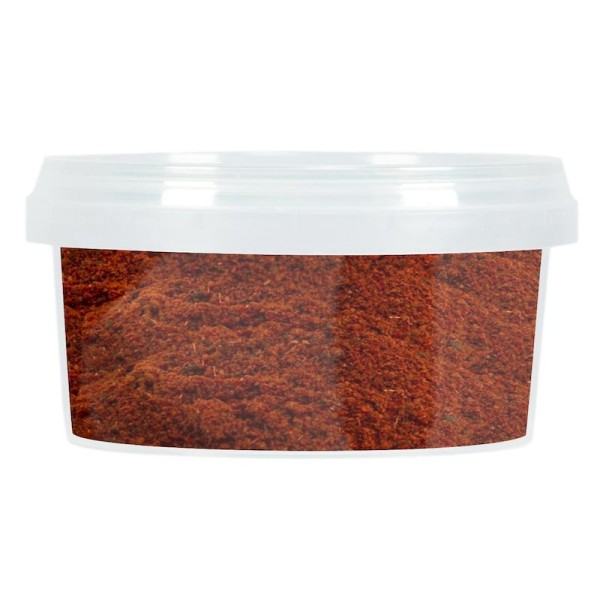








 No reward points for this product.
No reward points for this product.
